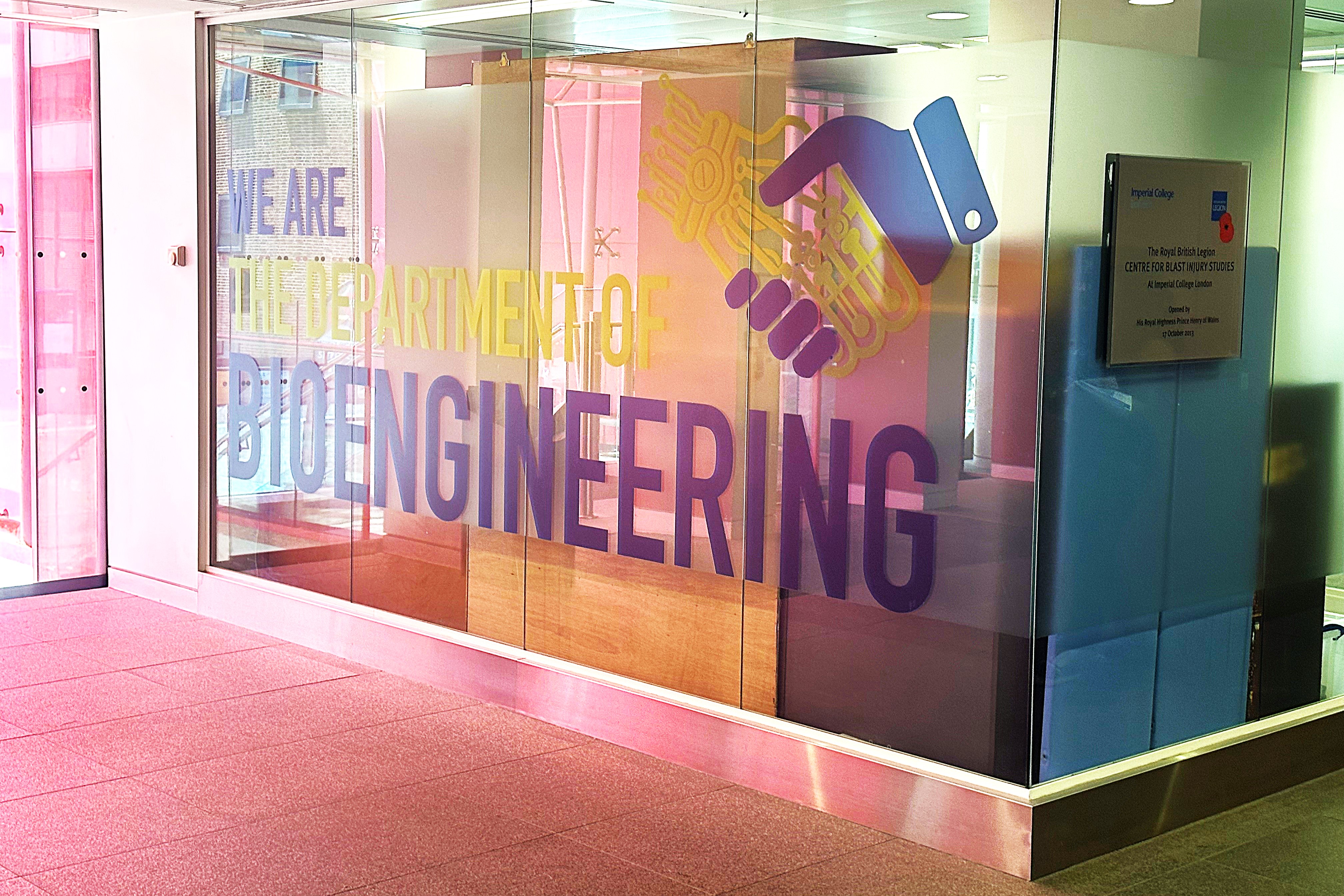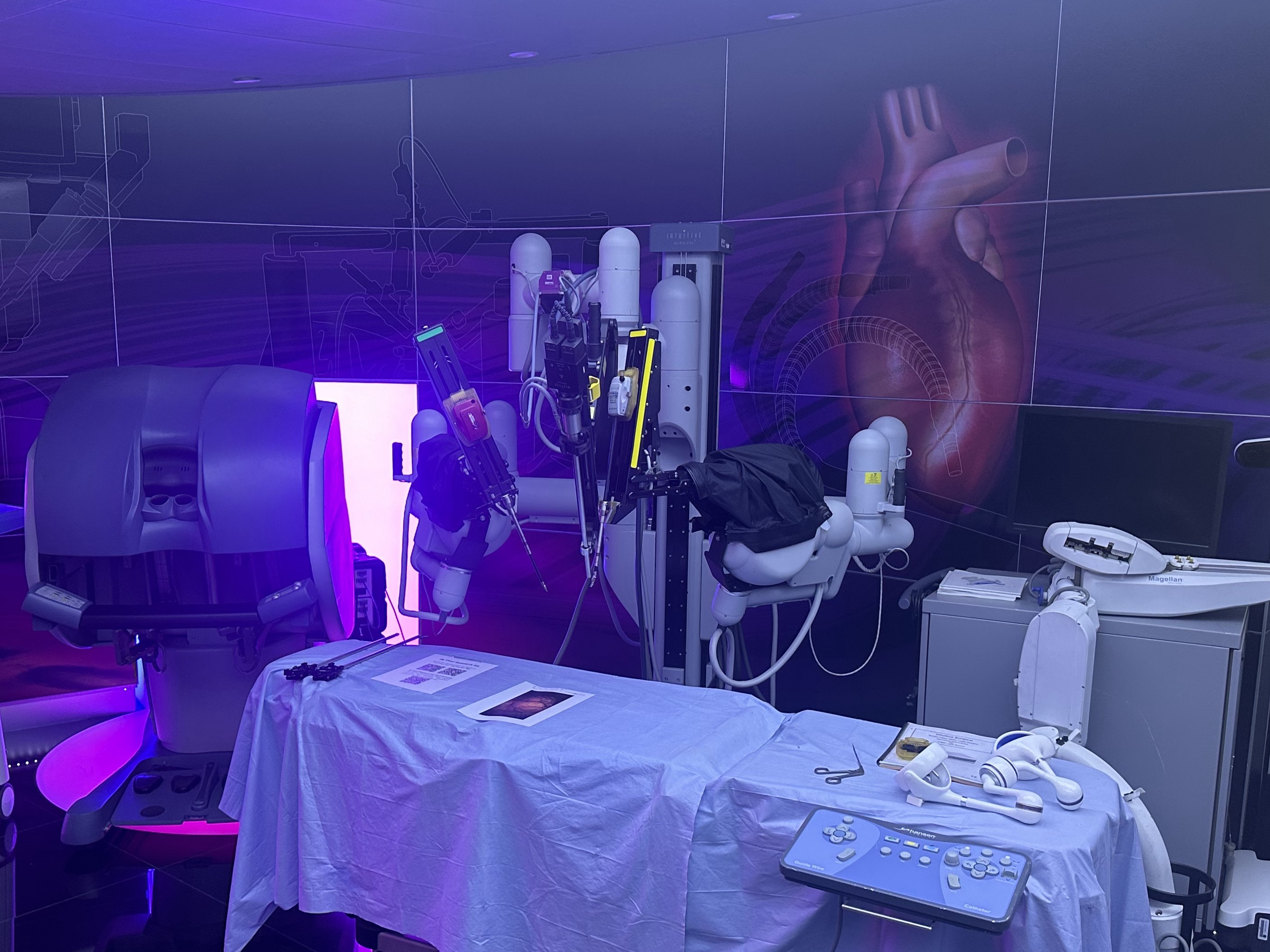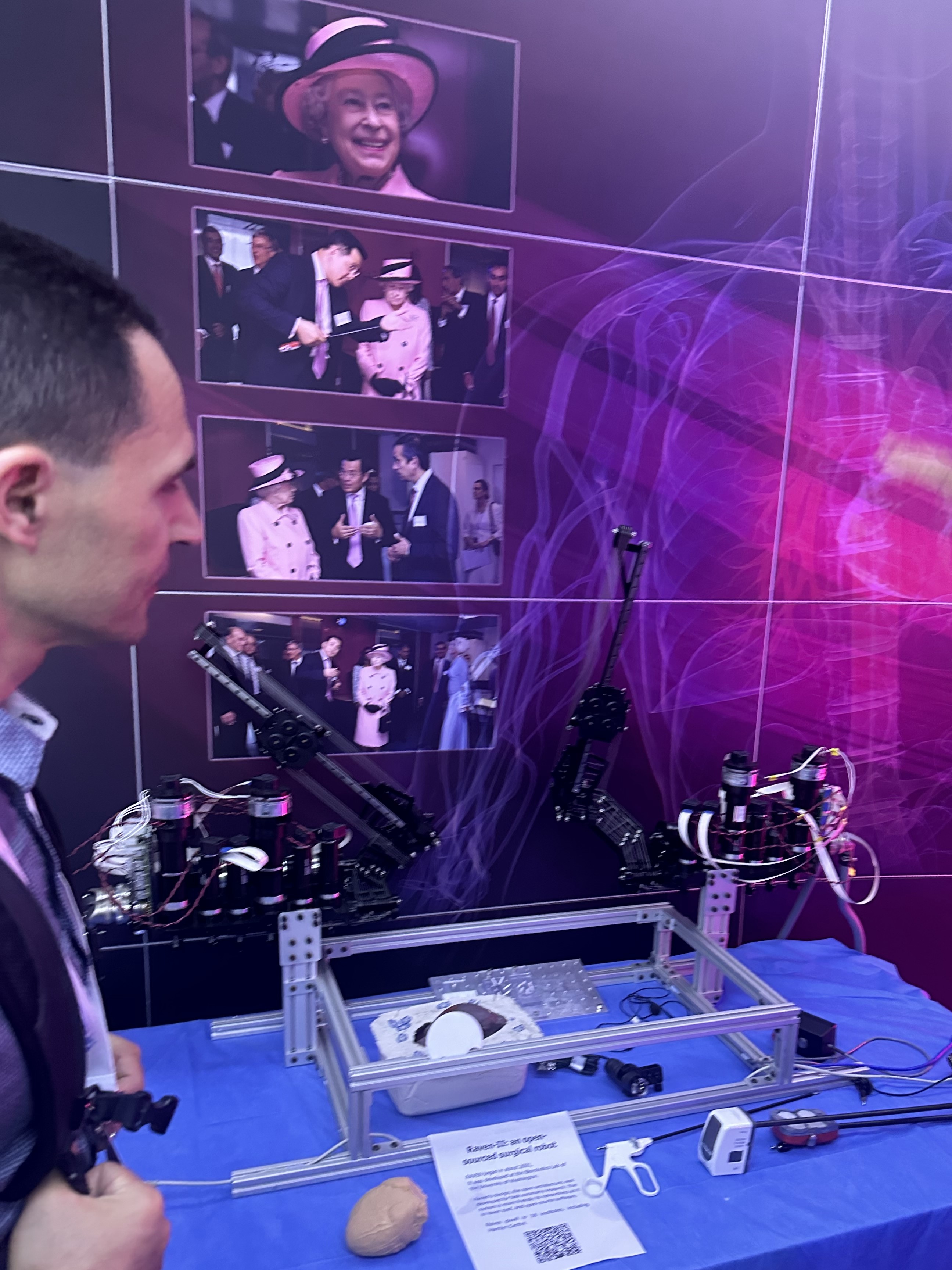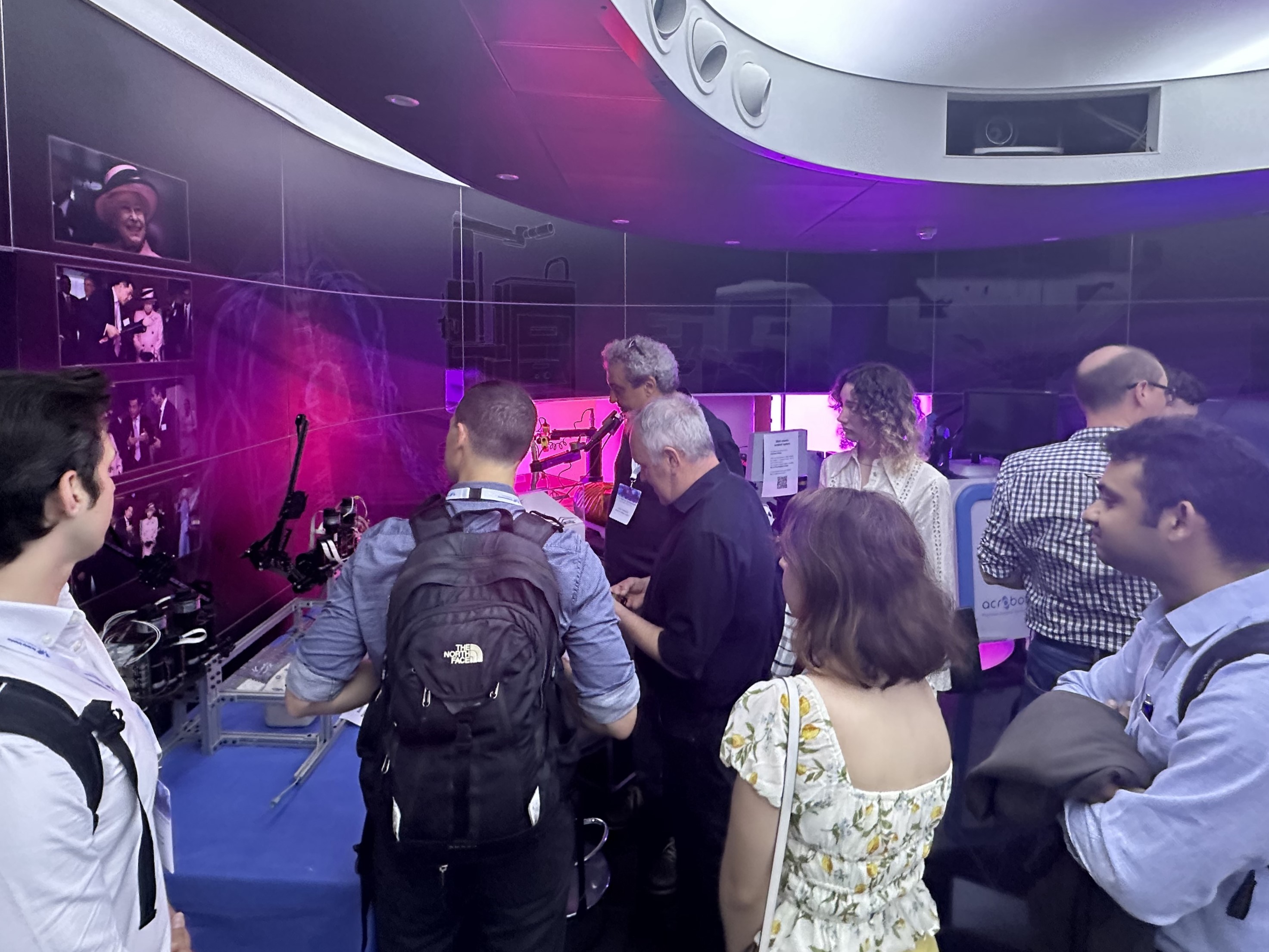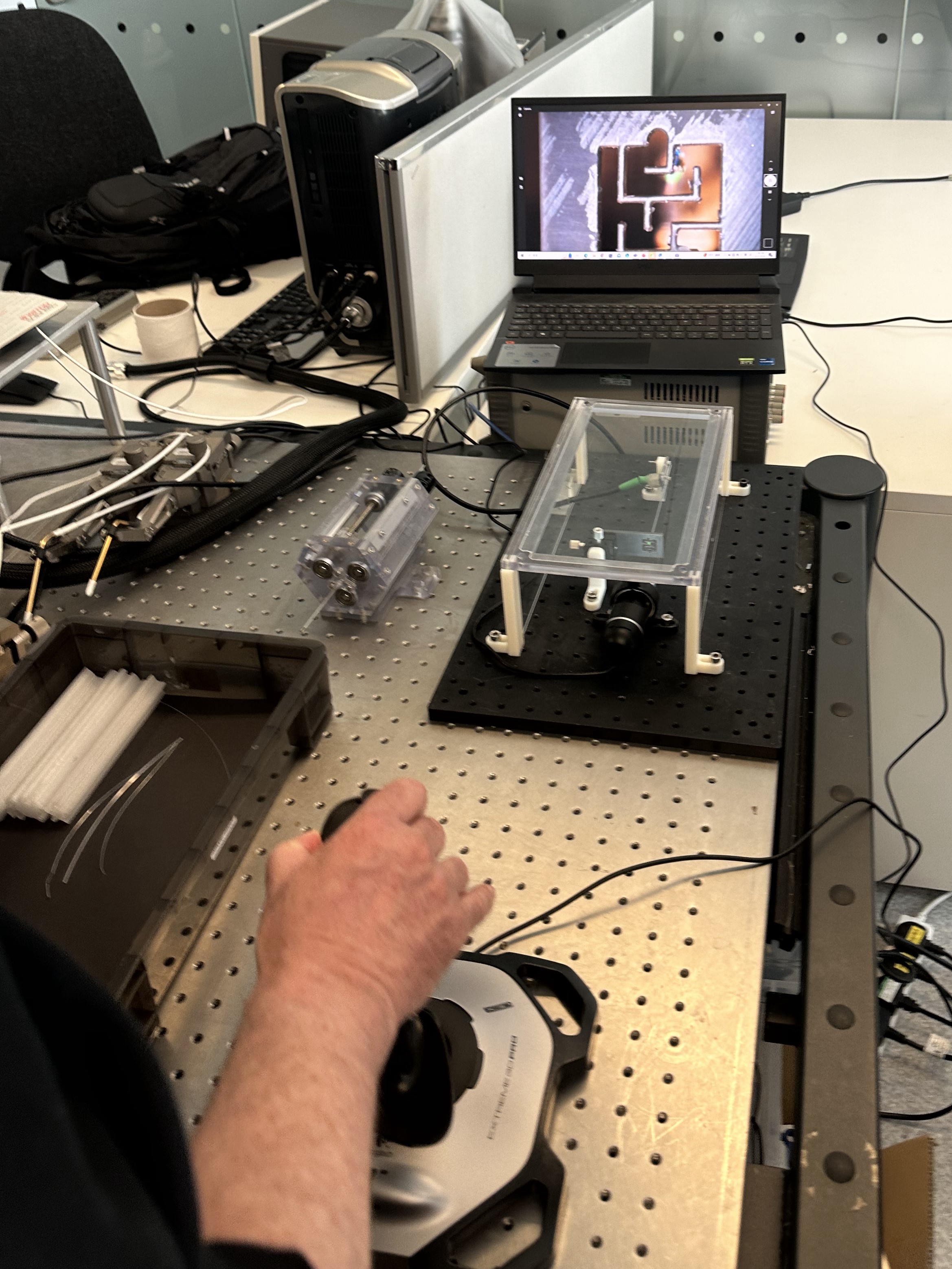The FAMES Lab team participated in the Hamlyn Symposium on Medical Robotics 2024, in the "Advanced Fibres for Therapeutics Diagnostics and Robotics" session, showcasing their pioneering research on advanced multimaterial fiber technologies for biomedical applications. The symposium, held annually since 2007, is the premier international forum for clinicians, engineers, and researchers to exchange ideas and explore innovations in medical robotics and healthcare technologies. The symposium brings together a diverse audience of clinicians, scientists, and engineers specializing in fields such as urology, neurosurgery, cardiac surgery, orthopedics, and more.
Dr. Alexander Gumennik, an invited speaker, delivered a presentation titled "Designing Biomonitoring and Biostimulating Fibers for Wound Prevention and Regeneration." His talk emphasized the potential of smart fiber-based devices in addressing critical healthcare challenges. These multimaterial fibers, with embedded functionalities [1], were presented as advanced tools for precision sensing during medical procedures, real-time caregiver feedback, minimally invasive operations, tissue stimulation, and even pathogen inhibition.
In addition to the keynote, Louis van der Elst and Merve Gokce presented a poster bearing the same title. The poster expanded on the lab’s work on integrating microscale technologies into fibers and textiles, offering precision and functionality to biomedical engineering and robotics.
By precisely controlling the fiber architecture, these devices achieve features like liquid transport, environmental stimulation, stress and proximity sensing, and chemical monitoring. For instance, one application involves a fiber device that prevents wound infections by disrupting bacterial quorum sensing through a galvanic current, significantly reducing infection risks [2]. This durable, cost-effective device boasts an unlimited shelf life. Another application includes a fiber antenna capable of detecting pressure and foreign objects in real-time [3]. Constructed with thermoplastic elastomer (SEBS) and parallel copper wires, the antenna's elastic properties enhance sensitivity to deformation, allowing for effective environmental monitoring. These innovative fiber technologies represent a significant leap forward in biomedical and environmental applications, offering multifunctional solutions with broad potential impacts, such as tissue engineering, wound healing, and intravenous surgical operations.
References
[1] L. A. van der Elst *, C. Faccini de Lima *, M. Gokce Kurtoglu, V. Narayana Koraganji, M. Zheng, A. Gumennik, Advanced Fiber Materials 3 (2021)
[2] L. A. van der Elst *, M. Gokce *, J. R. Coulter, Z. B. Cavdar, V. Narayana Koraganji, M. Ozturk, S. Ghatak, C. K. Sen, A. Gumennik, Advanced Material Interfaces 10.3 (2023)
[3] M. Gokce, E. Smolinsky, L. van der Elst, J. Noblet, C. C. Huntsman, and A. Gumennik, Proceedings Volume 12835, Optical Fibers and Sensors for Medical Diagnostics, Treatment, and Environmental Applications XXIV (2024)


